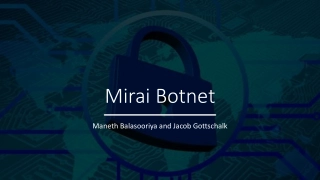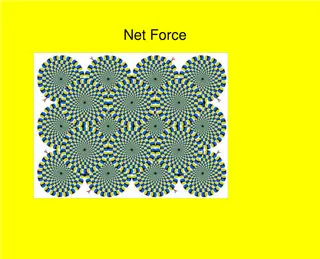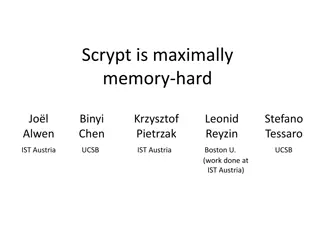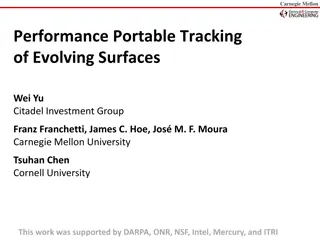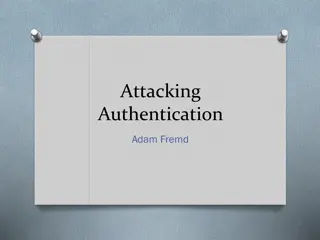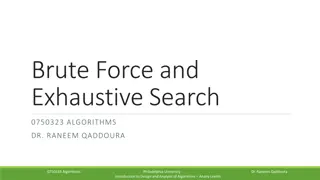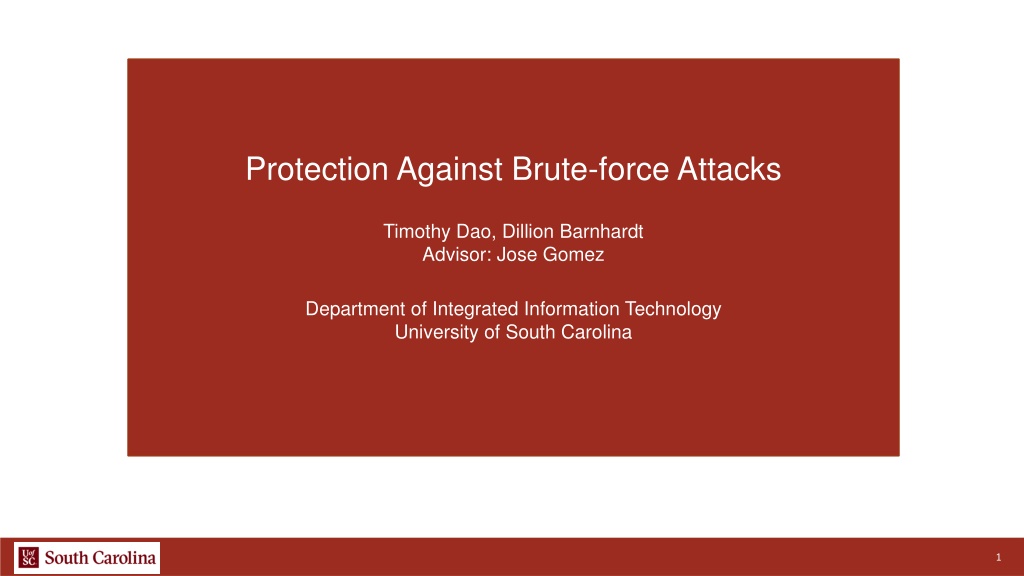
Protection Against Brute-force Attacks Study
Explore a study on protection against brute-force attacks, delving into the description of such attacks, objectives of using Next Generation Firewalls (NGFW), scenarios, mitigation strategies, advantages of NGFW, and valuable conclusions on the effectiveness of NGFW in detecting and preventing such attacks.
Download Presentation

Please find below an Image/Link to download the presentation.
The content on the website is provided AS IS for your information and personal use only. It may not be sold, licensed, or shared on other websites without obtaining consent from the author. If you encounter any issues during the download, it is possible that the publisher has removed the file from their server.
You are allowed to download the files provided on this website for personal or commercial use, subject to the condition that they are used lawfully. All files are the property of their respective owners.
The content on the website is provided AS IS for your information and personal use only. It may not be sold, licensed, or shared on other websites without obtaining consent from the author.
E N D
Presentation Transcript
Protection Against Brute-force Attacks Timothy Dao, Dillion Barnhardt Advisor: Jose Gomez Department of Integrated Information Technology University of South Carolina 1
Agenda Description of Brute Force Attacks Objectives Scenario Mitigation Advantages of NGFW Conclusion 2
Description of Brute force Attacks Attacker sends packets using a variety of protocols to continuously attack a destination IP address with the motivation of discovering credentials. The attacker can gain access to classified information and critical systems. 3
Objectives Determine the effectiveness of a Next Generation Firewall (NGFW) in detecting brute- force attacks, while providing best practices when deploying a NGFW Implement a brute-force detection policy to detect and block malicious attacks using the SSH, FTP, Telnet, and HTTP protocols Use an open-source tool to such as Ncrack and Hydra to perform Brute force Prevent tools such as Ncrack and Hydra from discovering credentials on the network 4
Scenario Attack will use PC2 to attack PC1 using SSH, Telnet, FTP, and HTTP NGFWs uses signatures to protect PC1 from a brute force attack 5
Mitigation Vulnerability protection policy is enacted when traffic that matches the selected signatures is detected Policy is triggered once there is over a certain criteria of detected SSH, Telnet, FTP, and HTTP packets sent. 6
Advantages of NGFW Inspects incoming packets in depth to look for attack signatures and detect threats Features malware and Denial of Service (DoS) protection that detects an blocks malicious traffic from entering and affecting users on the network NGFWs can monitor traffic from layer 2 through 7, this allows for application and user- based policies 7
Conclusion NGFWs are effective in detecting and blocking Brute-force attacks Open-source tools that are available to the public can be utilized to perform a multitude of attacks on different protocols Keeping a record of logs and utilizing attack signatures are an effective way to detect and block attacks 8



